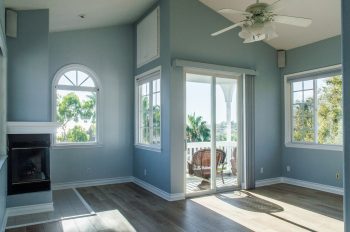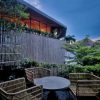
It is a fact that most roofs are designed to drain the water away from them, but then some can’t. Such roofs need special attention and maintenance. One of the best-known, common yet effective types of roofing for these circumstances is Modified Bitumen.
Without a doubt, Modified Bitumen is one of the most widely used types of roofing. Roofing in Albuquerque is more affordable compared to different other materials and more stylish. But if you are a new homeowner or planning to get your home worked on, you should probably be aware of some important facts about this material. This blog aims to tell you about some of the most important things you should know about Modified Bitumen.
What is Modified Bitumen?
It is a system that uses two different components to form a flexible, black sheet used for roofs. Modified Bitumen is usually made of an adhesive or rubber-like material and fiberglass mesh reinforcement. The unique composition helps the roofing membrane go along with all kinds of buildings, even in areas with extreme weather conditions like rain, snow, wind, etc.
It is often believed that the only type of roofing material that can withstand extreme weather conditions is flat roofs. This may be true in most cases but not always, especially for areas that experience snowfall or rainfall throughout the year. These regions need roofs with great quality materials capable of enduring harsh environments. Modified Bitumen provides all these qualities because it is a roofing membrane that can cover flat roofs.
What are the benefits of using Modified Bitumen?
- It is flexible, making it ideal for any type of building.
- It provides more security compared to other roofing materials because it is thicker and less likely to tear.
- It has an adhesive that helps it attach to the substrate.
- Depending on the surface, it can last more or less than 20 years.
Problems with roofs are quite common, but fortunately, there are some solutions available out there, one of them being Modified Bitumen. This type of roofing is known for its durability and resistance against various environmental conditions.
MODIFIED BITUMEN Weather Resistance
The weather resistance system of a building is a very important component to ensure the good quality of the built environment. This is because it protects the building from the effects of the weather. One of the common weather resistance systems that are used by building designers is the modified bitumen weather resistance system. This system is composed of five layers of materials. These layers are the felt, underlayment, granules, hot asphalt, and a protective coating. The modified bitumen weather resistance system is designed to protect a building from weather conditions that can damage the structure.
Is Modified Bitumen Environment Friendly?
Modified Bitumen is an environment-friendly material that can be recycled. Asphalt is the most common material used for roofing. It is commonly known as bitumen. Bitumen is a black, sticky, and highly viscous liquid or semi-solid form of petroleum. The main ingredient in asphalt is asphalt cement. Asphalt cement is made from oil and is the primary binder in asphalt. Asphalt is a modified form of bitumen. Bitumen is a mixture of paraffin hydrocarbons with a carbon and hydrogen content of about 9%.
Asphalt is a modified form of bitumen. It is a thermoplastic and thermoset, which means that it can melt, be molded into different shapes, and then harden again without losing its original properties. Bitumen is a solid material at room temperature. It can be made into liquid asphalt using a process called ‘vulcanization’. Vulcanization is the process of heating bitumen and adding other chemicals to change its properties. It can also be heated in an oxygen-free environment to increase its strength and durability.
Modified Bitumen Membrane Types
APP and SBS are the two most common types of modified bitumen.
APP Membranes
This membrane is made up of a material that is more commonly referred to as “plastic asphalt” and has been used for many years in the construction business. Attractive polypropylene (APP) membranes are resistant to ultraviolet rays. This material has become elastic after being mixed with plasticized polymers. APP is UV-resistant and a good choice for constructions that want to achieve a “cool roof” impression.
SBS Membranes
SBS stands for styrene-butadiene-styrene, but think of it as “elastic” or “rubberized” asphalt roofing. For natural flexibility and elasticity, this membrane blends asphalt with polymerized rubber. SBS is a good choice for roofs that expand and contract in response to extreme temperature fluctuations, as well as roofs that are prone to stronger winds.
HOW IS MODIFIED BITUMEN INSTALLED?
Modified bitumen (MB) is a type of synthetic roofing material. Its components include a reinforced fabric, bitumen, and various fillers. The modified bitumen roofing material is generally divided into two layers. The first layer is the backing sheet, which is topped by the second layer, a cap sheet. The backing sheet is made from either a knitted or woven fabric, as well as additional ingredients, such as rubber and fiberglass. The cap sheet is made from a foil-backed bitumen and is either self-adhered or torched into place. The bitumen is heated to a liquid state, after which it is poured over the fabric and allowed to cool.
5 LAYER SYSTEM
Modified Bitumen (MB) is one of the most cost-effective roofing systems you can choose. It’s a five-layer combination of roofing components to give you a long-lasting, durable roof over your head. Modified bitumen roofing systems (MB) are a five-layer combination of roofing components that give you a long-lasting, durable roof over your head. This roofing system is an ideal roofing solution for commercial or industrial buildings, schools, churches, and residential homes. Modified bitumen roofing systems are one of the most cost-effective roofing systems you can choose.








